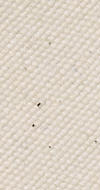How do we choose when we buy?
If you have to choose between putting on something you like and putting on something you like that is original, unique, quality and healthy, what would you choose? The correct choice seems obvious, but then when doing it …… This is almost never the case, hence the importance of choosing when buying.
Normally, what usually happens is that we buy several products cheaper and usually they are of low quality. But why are they so cheap?
It usually happens that after a few uses that item is damaged and deformed, however when buying what do we do? We prefer to have several cheap than a few of quality and then, we regret it.
Where is the trick to be able to offer a garment for a few euros?
It is clear, cheap products, cheap labor and we look the other way, that is why we highlight the importance of choosing when buying.
The fashion industry is the second most polluting in the world. The EU textile industry alone generates waste estimated at 16 million tonnes per year. It is to think about, right?
With more than 100 billion clothing products produced each year, fashion is one of the world’s most resource-intensive industries. Only one cotton T-shirt requires around 3,000 to 5,000 liters of water to produce, while synthetic materials such as polyester are made from non-renewable and non-biodegradable sources such as oil.
Need to change our consumption habits
If we don’t change our way of consuming, the fashion industry could contribute up to 25% of the world’s total carbon emissions by 2050. For this reason and now more than ever, innovations in environmentally friendly and sustainable fashion are catching on.
We can all help in this regard. When making the purchase we must analyze what we are acquiring, selecting with certain criteria. We can contribute by depositing unwanted clothing at delivery points, returning unused clothing to retailers and brands, renewing and updating the clothing we already have …. Every year up to 13 million tons of discarded clothing ends up in landfills.
It is not about going crazy and obsessing but yes, being a little more aware and reflective with what we buy, what we eat, the garbage we generate, etc.

How, When, How Much, What, Who and Why?
Ideally, sustainable fashion should head towards a circular economy.
Algunas marcas ya están comenzando a hacerlo recolectando sus prendas para darles una segunda vida. We can reuse or transform what we already have or if we have to buy something, do it in a more sensible way by asking ourselves a few simple questions: How much do I pay for it? Why is some so cheap? What am I buying? How has it been done? Who made it? How long will it last in good condition? Do I really need it?
The reason for Sustainable Fashion
With technological advances, there is a need for an integrated approach to sustainable fashion supported in terms of environmentalism and social responsibility. Not only it the processes and improvement of the quality of the fabrics, but also using less water and discarding the use of chemical products. In this sense, the planet will be favored and our skin will also appreciate it.
The dyeing and finishing process is the most energy intensive. Therefore it is vitally important to use natural and non-aggressive dyes. And this is not only for the care of the environment, it is also a health issue. The toxic chemicals used in the Textile Industry can be absorbed by our skin and affect growth hormones, sexual and reproductive development, cancer, immune system disorders, the liver and thyroid. Hence the importance of using textiles and products as natural and sustainable as possible. It is a little scary, right? For this reason we must emphasize the importance of choosing when buying.
Fair trade and decent work
Another important issue is to respect the workers who have intervened in any of the processes. Good working conditions and decent wages must be provided to sustain businesses, ethical businesses and fair trade.


Revolución y avances en Textiles Sostenibles
Great progress is being made in this regard and this has only just begun. Research advances towards new typologies and better properties. There are already a multitude of sustainable fabrics and new ones are emerging every time, some of them surprising and this has only just begun.
Types of Sustainable Fabrics
El Algodón orgánico:
It is grown in fair conditions for workers, without pesticides, herbicides, fertilizers or chemicals and is a thermal regulator (warm in winter and cool in summer).
his type of cotton is chosen by Hemoevil brand as the physical support for the first collection of Works of Contemporary Art that the artist Xan Medina has made for the firm in his six different T-shirt designs.
Recycled cotton
It is one of the most sustainable and respectful fabrics that maintains the qualities of organic cotton.
Linen
Se confecciona a partir del tallo del lino. It is a very resistant natural, fresh, recyclable and sustainable fiber.
Organic wool
It is obtained from sheep’s wool with organic pastures. No additives, bleaches or solvents are used in its treatment. It is durable, biodegradable, very resistant and hypoallergenic.
Lana reciclada
It is achieved by recovering the remains and trimmings left over from having previously processed virgin wool or wool that has already been used, crushing it and re-processing it again.
Recycled and reprocessed fabrics with very low impact
Otros Tejidos
We can find extraordinary fabrics, made with Bamboo, hemp, coconut shell, banana, recycled plastic and others more unusual such as Muskin, which is a leather obtained from the upper part of the mushroom. The Piñatex, made from the pineapple fibers and is also assimilated to leather. Microsilk, obtained from the spider web. Fabrics made from Orange Peel, Wood Pulpand more and more innovations and discoveries …





Fast Fashion versus Slow Fashion.
The Fast Fashion industry is a multi-billion dollar global industry preserved by secrecy with a reputation for malpractice and little transparency for the sake of unscrupulous profit.
Slow Fashion supports the opposite. Defend ethics, transparency and accountability. He argues that customers should know how and where supplies are purchased and how the different products have been produced. There is currently a change in the fashion market to which the industry is evolving to adapt. That is the turning point where the need for Slow and Sustainable Fashion arises. This is an upward and necessary trend because it is ethical and sustainable and more and more people are joining this current and demanding it.
The planet is ours, take care of it without losing your identity
This has only just begun. This is the path that Hemoevil follows, it is part of its DNA, so in our next collections we will move towards new projects and new materials that will surprise you. As for the contemporary designs and works printed on our products we will talk in another post in which we will discuss the importance of the images we wear.












